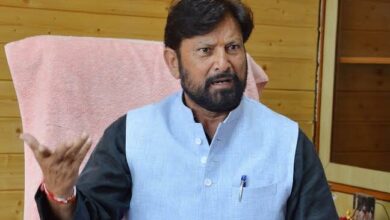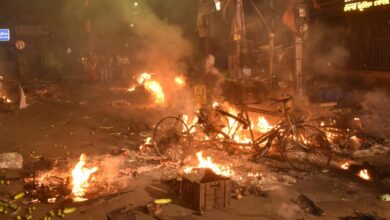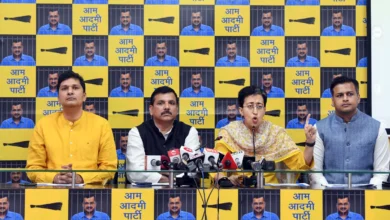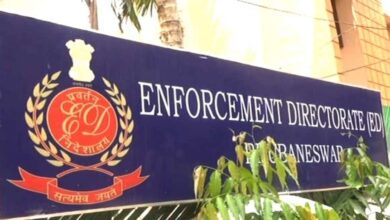Can AAP emerge as the new-third pan India alternative for the electorate of the world’s largest democracy?
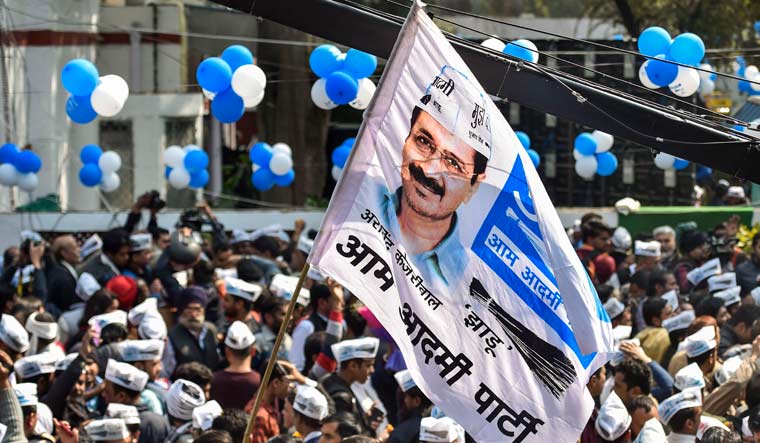

In October 2011 during the peak of the Anna anti-corruption movement against the grand old- Congress party a skinny, coughing man wearing oversized clothes had vowed on prime-time TV of never contesting in elections and of having no political ambitions.
Fast forward to 2013, a political party named AAP under the leadership of the same man- Arvind Kejriwal sprang up a surprise by emerging out as the second-largest party in the Delhi elections and went on to form a coalition government with the same Congress against which it had contested. Though the government lasted merely for few months it is proving out to be one of the major political turning points for Indian democracy.
2015 was when AAP stamped its dominance by giving out a major jolt to both Congress and BJP the two main national parties by winning all but 3 Delhi legislative assembly seats. This dominance in Delhi state politics was sealed firmly when in 2020 AAP defeated the mighty and power-hungry BJP leaving it again in single digits.
AAP the newest major force in the Delhi state political spectrum is rapidly expanding itself at the grassroots of the Indian political fight at the expense of the grand old party- Congress. While the two major national parties Congress and the BJP take away all the pan-India media limelight, AAP is emerging from the shadows and increasingly trying to contest and win local body elections in various states.
The idea of expansion is not a new concept for the party, just after a surprise win in the 2013 Delhi state elections, Kejriwal had unsuccessfully contested against PM Modi from Varanasi in 2014 while his party AAP had fielded candidates for a major chunk of Lok Sabha seats in vain.
After the initial unsuccessful taste of national politics post-2015, it went quiet in the national scenario focussing on developing a “Delhi Model “which it can use to woo voters of other states at a later stage. The strategy paid dividends when it won the opposition space in the Punjab legislative elections in 2017, snatching it from the SAD+BJP combine. But it failed to open its account during the Goa elections which were held simultaneously and lost deposits for 38 out of the total 39 seats.
After the failure to win seats in the Goa legislative assembly the party decided to further increase the appeal for its “Delhi Model “and started to give out a lot of freebies like electricity, water, health centers, free transport, etc and decided to use this model in local body elections of various states so that a grassroots level organization is developed for large scale expansion (national and state legislative) at a later stage. This strategy is somewhat similar to BJP’s pre-2014 “Gujarat model “strategy.
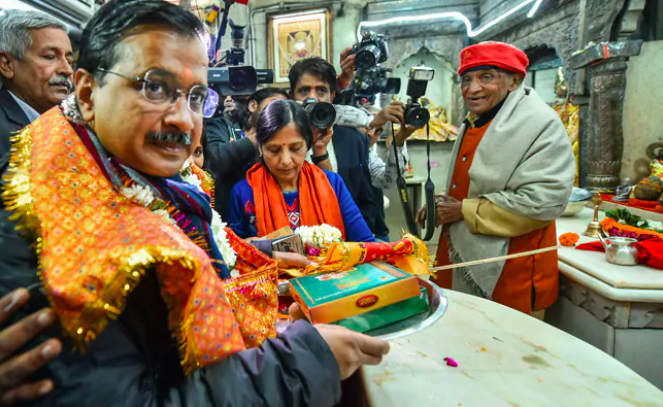
“People across the country are talking about the good governance of the AAP in Delhi. Everywhere in the country, people want power and water subsidies and welfare schemes like Delhi. We need to bridge the gaps. For that, we need to build up a strong organization… In the next two years, our party will contest elections in Uttar Pradesh, Uttarakhand, Goa, Punjab, Himachal Pradesh, and Gujarat… People are ready and now we just have to reach out to them,” Kejriwal said at the national council meeting of the party held at Kapashera.
This strategy has started to prove itself successful, particularly due to the complete absence of the Congress party as an effective opposition nationally. The AAP is targeting states where the opposition party is not effective and in shambles as in the case of Punjab where even though AAP did not come into power but replaced the hugely unpopular SAD+BJP combine as the main opposition. It won seats on the “Delhi Model “plank.
The same thing happened in last week’s Gujarat local body elections. Though the BJP this time after losing some ground in 2015 to the congress wrestled back into dominance by nearly winning all taluk and district panchayats along with the municipalities, seeing this the media started to write articles singing praises of BJP of how the “Gujarat Hindutva fortress “is impermeable but what they missed out was the significant seats won by AAP.
In the municipal corporation election, the AAP replaced Congress as the main Opposition party in Surat winning 27 seats. In the local body polls for which results were announced on Tuesday, the AAP won 31 seats in taluka panchayat, nine seats in municipalities, and two in district panchayats. Again here the “Delhi Model “was used to woo people.
The fact that AAP which is seen as an Urban-Delhi party managed to gain a significant foothold in rural Gujarat should be a cause of concern for both BJP and Congress. AAP will try to occupy the main opposition space in the next legislative elections from the congress, hoping at a later stage to dismantle the BJP from its 25 years of power in Gujarat too.
The AAP will contest elections on all seats in the local bodies’ polls in the state for the first time. Not just the local bodies polls, but the AAP will also contest the Vidhan Sabha elections in Gujarat as well as other polls,” Atishi Marlena senior AAP member said in a statement.
The strategy of AAP is clear to target smaller states and states where the opposition party (mainly congress) is ineffective and inefficient , build grassroots level organization there and wrest the opposition space hoping to come into power at a later stage. Though at the movement it is a cause of concern for Congress but maybe a decade later when BJP will face anti-incumbency and with an active opposition like AAP it may become a headache for BJP too as their cakewalk and bulldozing of elections will end.
The party has also planned to target states where only two parties exist as an option like Uttarakhand and Goa. It has already started building grassroots level political infrastructure there. “That is why Punjab was successful, when in a first attempt, we became opposition and were disappointed not to form the government. People wanted a third voice after the Akalis and the Congress. In Goa, our campaign is about how leaders of the BJP and the Congress are the same, and keep switching sides. In Uttarakhand, there is no credible opposition to the BJP,” a senior party leader said on the question of a third alternative.
In December, Deputy CM Manish Sisodia visited Uttarakhand twice, promising free power, health, and education facilities. Both the national parties, the Congress and the BJP, have mostly held the power in the state since its formation in November 2000.
Without getting media limelight the party is slowly increasing its national footprint by contesting selected pockets of regional and local body elections to maximize and concentrate its resources and the strategy is proving to be effective. The biggest advantage is that the Media is too much focussed on the electoral might of the BJP and the shambles in which the Congress is in giving AAP a silent backdoor entry. Also the two main parties BJP and Congress are seeming not to be threatned by these small victories. But they should rememebr that even BJP had only 2 Lok Sabha MP’s at one point of time before getting majority twice.
In recent times, the AAP has registered victories in the Goa and Jammu and Kashmir local body polls. In Goa, the AAP won a panchayat election while in Jammu and Kashmir, an AAP member won the District Development Council (DDC) polls in the Doda district. The AAP has also planned to contest Mumbai municipal elections which is the richest municipal body in Asia and for far longer has seen very less development with no political alternative available.
The recent MCD by-elections have come as a shot in the arm with AAP getting the lion’s chunk of vote share (46.10%) winning 4 out of the 5 seats that went to poll. The BJP has been holding on to MCD for 4 terms now and accusation of corruption and mismanagement against it is rampant. Political analysts predict a landslide AAP win in the next MCD elections.
The AAP has also planned to expand itself Northeast in Assam and in UP, but political analysts say to shed the urban party tag in this region dominated by rural politics will be difficult for it. Nonetheless, the party is chalking out a strategy for the same. Analysts say the party is being over ambitious and should focus on smaller states and not repeat its 2014 failures.
It Is also interesting to note that Kejriwal to counter the Hindutva effect of BJP has been toing a similar but subtle line. During last year’s Diwali, he organized a grand Ram aarti and had not visited Shaheed Bagh even once during the CAA protest, projecting himself as a Hanuman Bhakt just before Delhi state elections. Maybe he is trying his hand into Hindutva too to gain ground in states like Assam and UP.
Nevertheless, even though this expansion strategy is more cause of concern for Congress now than BJP but in the future, it may even harm BJP’s prospects when maybe a decade later when anti-incumbency kicks in. It’s good for Indian Democracy if a third pan-India option is available to its electorate but it should not be based on the promise of freebies as it will hurt the economy but be rather based on strong developmental politics. This may even turn out to be doom and a final nail in the coffin to the Congress party leaving it in an existential crisis like in Delhi with AAP taking up its national space, again making Indian politics dominated by two national parties again. The answer to all these theories only lies in the future but a vibrant-development based politics will never hurt Indian democracy.
